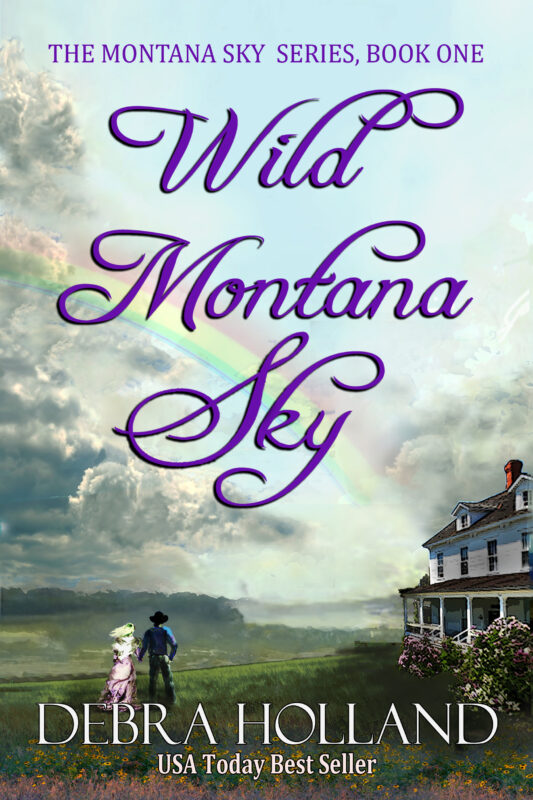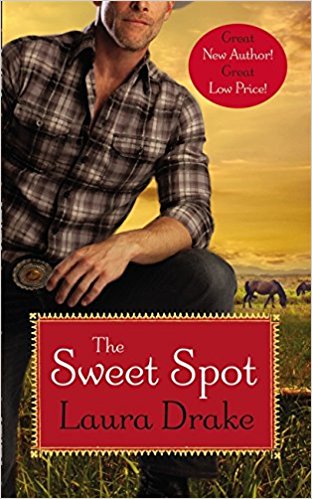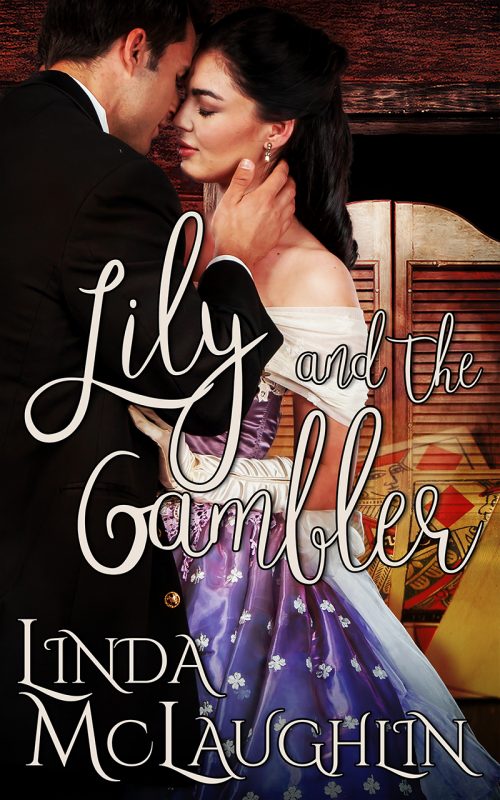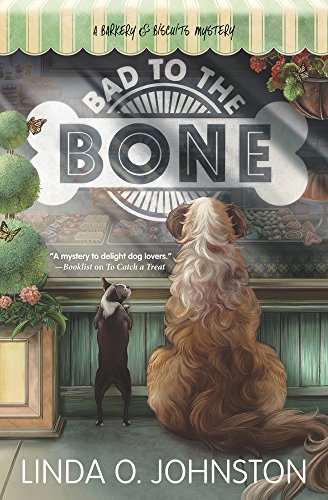Who Tells the Tale? Narrative Voice by Jenny Jensen
June 19, 2019 by Jenny Jensen in category On writing . . . by Jenny Jensen tagged as 1st person, editing, Narrative Voice, writing
Narrative Voice
The creative process is a mystery to me. I like it that way. Not knowing how or why an author chooses a certain literary device makes every book I read a fresh experience. I’m not always wowed by the tale but I like to start with no bias. Just lately though, I can’t help wondering what drives so many of my clients to write in 1st person. I love a good tale told in 1st person but it’s the most difficult narrative voice to get right.
Up until the mid 20th century the lion’s share of novels were written in 3rd person. A quick glance of current literary prizewinners shows 30% written in 1st person (The Handmaid’s Tale, The Hunger Games, The Martian etc.). Current genre and commercial fiction is more like 50%. Clearly, this is the age of 1st person and I think I know why—energy, immediacy and intimacy. While those three qualities attract us they’re also what makes 1st person hard to write well.
Be Compelling
The narrator has to be interesting enough to carry the reader through 200 plus pages of story. Basically it’s the only voice we hear so it better be entertaining. The character can be droll, hysterically funny, bitingly snarky, painfully deluded, even seriously insightful—as long as the energy exuded is compelling. Sometimes the narrator exists to showcase the main character. Watson is a rather deluded and bumbling narrator but we become fond of him. It’s his subject, Holmes that keeps the reader riveted. We want to stay for the whole ride.
1st person is both immediate and intimate. The reader sees the action through the narrator’s eyes rather than from the outside. It’s close up and personal so the reader has a sense of being present as the action takes place. With a compelling narrator and interesting plot it’s easy for the reader to feel they have a stake in the story. 1st person reads like a journal or a personal letter. The reader sees, hears and knows what the narrator sees, hears and knows. There’s no distance between us—all the more reason to craft a compelling narrator. The narrator speaks directly to us. Well done, 1st person is more exciting, more emotionally engaging and more satisfying than the viral YouTubes of laughing babies and crazy critters caught on camera. No wonder we love it.
Remove Filter Words
There is one cardinal sin when writing 1st person – filter words. They put a dampening distance between the reader and the action. Because we see, hear, smell, feel and know what the narrator does there is no room for distancing the reader.
“I even thought of doing something gossipy…”
Filter words removed:
“I considered something gossipy…”
I could hear…I thought…I felt…I saw…chop away the filter words and close the distance. Good first person narrative is always from behind the character’s eyes.
Having put these thoughts down I think I’m going to read The Perks of Being a Wallflower (Chbosky). I love a good first person story. Do you?
~Jenny
3 0 Read more
What is Story? By Kidd Wadsworth
June 18, 2019 by Kidd Wadsworth in category Infused with Meaning by Kidd Wadsworth tagged as external conflict, internal conflict, Lisa Cron, Story Genius, The Wizard of Oz, writing
My writing career was going nowhere. I’d imagined hundreds of thousands of dollars of income, fame, and something far more elusive, critical acceptance. My average annual income was hovering at $42.11; rejection letters carpeted the floor. Why? What was I doing wrong? I would have fixed it…if I’d known what “it” was.
Enter Story Genius by Lisa Cron, a book recommended by one of my writing buds—and the pieces fell into place. Cron’s hypothesis: All great stories have both an internal conflict and an external conflict. Because people procrastinate, because not a one of us wants to face our inner demons, great stories use an overwhelming external conflict to force the protagonist to grapple with his or her internal conflict.

The external conflict in the story forces Dorothy and her friends to face their fears. When Dorothy is kidnapped by the flying monkeys and taken into the lair of the Wicked Witch, the scarecrow hatches the rescue plan. Hmmm…smart and decisive. The cowardly lion is willing to fight the palace guards to save her. At the end of the story, when she must leave, the tinman weeps. Dorothy who, at the beginning, was willing to listen to munchkins (who told her to follow a stupid yellow brick road to find a wizard) learns that her future is in her own feet. Remember, the wizard did not get her home. She missed the balloon. Instead, she got home by clicking her heels together. Her actions, not those of a charlatan wizard, determined her future.
Thus, we see Cron’s classic pattern:
External Conflict → Compels the protagonist to face → Internal Conflict
The Wicked Witch of the West → forced Dorothy to face→ her fears about her own future
Before I put a single word on the paper, I ask myself: What is my character’s greatest fear? Then I craft an external event so powerful that my protagonist is forced to face that fear. I leave her no room to dither or escape. Finally, when she wrestles with her fear, when she grows, when she becomes more than she ever dreamed she could be, then I know, I’ve got a great story.
~Kidd
Welcome
A Slice of Orange would like to welcome Kidd Wadsworth. Her column, Infused with Meaning, will post here on the 18th of each month. We are thrilled to have her writing for us. We hope you enjoy her posts as much as we do. Welcome, Kidd!
4 0 Read more
The Book Jacket
June 15, 2019 by Rebecca Forster in category The Write Life by Rebecca Forster tagged as inspiration, Rebecca Forster, thrillers, writing
 This morning I read an article entitled Mister Waters’s Cardigan. It seems that Mr. John Waters, the campy, iconic American film director, screenwriter, author, actor, stand up comedian and all-around-impressive guy wears a ‘writing’ cardigan with mother-of-pearl buttons to spark his imagination. It is an Our Legacy cardigan. Our Legacy is a line of clothing designed for “down-to-earth, embarrassed-to-be-affluent fashionistas who never want to look silly” (this according to Mr. Waters). I looked up Our Legacy. The man’s cardigan I saw would set you back $458. It was very nice and very understated. Indeed, this cardigan would fool anyone into thinking the darn thing was made for a regular Joe.
This morning I read an article entitled Mister Waters’s Cardigan. It seems that Mr. John Waters, the campy, iconic American film director, screenwriter, author, actor, stand up comedian and all-around-impressive guy wears a ‘writing’ cardigan with mother-of-pearl buttons to spark his imagination. It is an Our Legacy cardigan. Our Legacy is a line of clothing designed for “down-to-earth, embarrassed-to-be-affluent fashionistas who never want to look silly” (this according to Mr. Waters). I looked up Our Legacy. The man’s cardigan I saw would set you back $458. It was very nice and very understated. Indeed, this cardigan would fool anyone into thinking the darn thing was made for a regular Joe.
I read the half-page article about Mr. Waters’s cardigan and lusted over the column inches dedicated to his sweater and his work. But the sweater? I’ll pass. You see, I have writing wear too and I think mine beats his hands down. Instead of a sweater, I wear a fleece jacket. It is made of recycled tires. My husband keeps trying to wash the darn thing because the cuffs are turning black and he thinks it’s dirty. I explain this is just the fleece wearing out and the black rubber of the recycled tires peeking through, but he will have none of it. I am constantly rescuing my writing jacket from the laundry.
Instead of an understated heather grey, my jacket is screaming-mimi yellow. I make no excuses for this. I know I am not at my most attractive in this jacket. I actually look like a cross between Tweety Bird and an egg yolk. On a good day I can pass for Sponge Bob Squarepants.
My jacket has no fashionista sensibilities with its big collar, giant cuffs and boxy cut. My jacket has three plastic buttons. My writing jacket set me back $10. Yes, that is ten buck-a-roos which is $448 less than Mr. Waters’s cardigan.
As different as Mr. Waters and I are – he writes camp, I write thrillers, he is affluent, I am what I am – we are the same in that we draw inspiration from something we don before we write. Our writing clothes keep us warm, help us think, signals to the world that we are working and are not to be disturbed. Our jacket/sweaters give us confidence and stick with us as we create worlds far away from the world we’re in. So the bottom line is this: find your writing sweater/jacket. No matter what it looks like, no matter how much you spend on it, if it’s the right one the benefits you will gain as an author are priceless.
2 0 Read moreJune Featured Author: Denise M. Colby
June 14, 2019 by Denise M. Colby in category Apples & Oranges by Marianne H. Donley, Featured Author of the Month tagged as Christian Historical Fiction, Denise M Colby, Marketing, Social Media, writing

Denise M. Colby loves to write words that encourage, enrich, and engage whether it’s in her blog, social media, magazine articles, or devotions. With over 20+ years’ experience in marketing, she enjoys using her skills to help other authors. She treasures the written word and the messages that can be conveyed when certain words are strung together. An avid journal writer, she usually can be found with a pen and notepad whenever she’s reading God’s word. Denise is writing her first novel, a Christian Historical Romance and can be found at www.denisemcolby.com
She’s a member of RWA, OCC/RWA, Faith, Hope & Love Chapter of RWA, ACFW (where she is a semi-finalist in the Genesis contest Historical Romance Category), OC Chapter of ACFW, and SoCal Christian Writers’ Conference (where she will be teaching two workshops in June – Brand and SEO Marketing for Your Website).
In addition to Denise’s column The Writing Journey on A Slice of Orange, you can read some of her magazine article here.
Denise M. Colby’s Books
0 0 Read more
Creating a Setting for Your Cozy Mystery by Carol L. Wright
June 13, 2019 by Bethlehem Writers Group in category From a Cabin in the Woods by Members of Bethlehem Writers Group tagged as BWG, Carol L Wright, cosy mysteries, cozy mysteries, Setting, writing

This month on From A Cabin in the Woods, we are featuring editor and author, Carol L. Wright.
Carol L. Wright escaped a career in law and academia for one in writing. She loves writing her Gracie McIntyre cozy mysteries where, unlike in life, justice always prevails. The first in the series, DEATH IN GLENVILLE FALLS, was a finalist for both the 2018 Killer Nashville Silver Falchion Award and the 2018 Next Generation Indie Book Award. She also writes short stories in many genres that have been published in a variety of literary journals and award-winning anthologies. She is married to her college sweetheart, and they live in the Lehigh Valley of Pennsylvania with their rescue dog and clowder of cats. Find out more on her website, and on Facebook at Carol L. Wright, Author.
Creating a Setting for Your Cozy Mystery
Carol L. Wright
 When we think about the setting for a cozy mystery, Murder She Wrote’s Cabot Cove or Agatha Christie’s St. Mary’s Mead often come to mind. Indeed, the term “cosy,” as the Brits spell it, was coined to describe Dame Agatha’s mysteries. Following these examples, most cozy writers choose a closed community as the backdrop for their murder. But, there is much more to a memorable setting for a cozy than being located in a small town.
When we think about the setting for a cozy mystery, Murder She Wrote’s Cabot Cove or Agatha Christie’s St. Mary’s Mead often come to mind. Indeed, the term “cosy,” as the Brits spell it, was coined to describe Dame Agatha’s mysteries. Following these examples, most cozy writers choose a closed community as the backdrop for their murder. But, there is much more to a memorable setting for a cozy than being located in a small town.
Once, only British settings were deemed appropriate for cozies. As recently as twenty years ago, some said cozies had to be set in England or in New England. But Jessica Fletcher travelled widely, and even Christie set some of her mysteries on an isolated Indian island (And Then There Were None) or at an exotic hotel (A Caribbean Mystery). Many readers, in fact, love to learn about new places while trying to solve a mystery—so long as those places aren’t too off-putting. Harsh settings are usually reserved for harder-edged fiction.
 With the idyllic small-town disappearing in the modern world, it’s not necessary to recreate a Cabot Cove. Since part of a cozy setting is the feeling of comfort and normalcy, you can set your mystery any place you wish, so long as you give your readers a feeling of familiarity. Anything from an ancient castle to a city neighborhood, a ski lodge to a desert island, a vacation resort to an Amish community will work just as well. Almost any place will do where people are thrown together and know (or get to know) each other.
With the idyllic small-town disappearing in the modern world, it’s not necessary to recreate a Cabot Cove. Since part of a cozy setting is the feeling of comfort and normalcy, you can set your mystery any place you wish, so long as you give your readers a feeling of familiarity. Anything from an ancient castle to a city neighborhood, a ski lodge to a desert island, a vacation resort to an Amish community will work just as well. Almost any place will do where people are thrown together and know (or get to know) each other.
Real or Fictional
But, should your setting be real or fictional? Both have their challenges.
 If you use a real place, you need to be familiar enough with it to be sure you don’t get it wrong. Residents of that place must be able to imagine your story on the familiar streets of their home. You can’t place an event at the intersection of 15th Avenue and 26th Street in Manhattan, for instance, since anyone familiar with New York would know that would put you somewhere in the Hudson River. Such errors take readers out of the story and cause them to question the rest of your “facts.” It might even cause them to give up on your book altogether or leave (yikes!) a bad review.
If you use a real place, you need to be familiar enough with it to be sure you don’t get it wrong. Residents of that place must be able to imagine your story on the familiar streets of their home. You can’t place an event at the intersection of 15th Avenue and 26th Street in Manhattan, for instance, since anyone familiar with New York would know that would put you somewhere in the Hudson River. Such errors take readers out of the story and cause them to question the rest of your “facts.” It might even cause them to give up on your book altogether or leave (yikes!) a bad review.
Besides accuracy, when using a real setting you need to beware of potential libel if you use real businesses or real people’s names—or even substitute fictional names but do not sufficiently conceal the real entity upon which it is based. You might think that a business owner would love to have the free publicity of being in your novel, but not all would—especially if they’re to be associated with a murder. If they believe your novel casts them in a false light, they can sue. Even if you won a lawsuit, it would cost you so much to defend it that you would regret using real names/businesses. If you must use real people or businesses, get a written release from them. For more on this, see: How to Use Real People in Your Writing.
The Details
The other option, of course, is to use a completely fictional setting. If you do, you will need to provide all the details of the terrain, climate, and culture of the place to allow your readers to become immersed in your fictional universe. Think about Carolyn Hart’s Broward’s Rock Island, SC, or my own Glenville Falls—a college town nestled in Western Massachusetts. While each is within a known region, the towns, their businesses, modes of transportation, and traditions are creations of the authors.
Even fictional settings can reference real places in a general way. In my Gracie McIntyre mysteries, I mention UMass-Amherst, Springfield, and Boston, MA, but the action of the story occurs in my fictional town of Glenville Falls. In Sherry Harris’s Sarah Winston Garage Sale Mysteries, that happen to be set in the area where I grew up, her town and the name of the nearby Air Force Base are fictional, but she mentions surrounding towns, roads, and landmarks. Reading them gives me a feeling of being back home. Done well, incorporating real places can help sales to the area’s current and former residents—especially if you do book signings there.

Back Ground Characters
Another part of the setting is your background characters. These are definitely NOT the folks who will drive your plot, kill your victim, or solve the crime. They’re the person who takes orders in the coffee shop, the mail carrier who delivers the threatening letter, or the security guard who lets people into the gated community. If the location of your story were a room, these characters would be the furniture.
As with any room, you want your furniture to add color, interest, and comfort to the setting. One character might have a colorful accent (pillow?) or mode of speech. Another could give the sleuth a place to rest and think a bit. Another could shed some light on the story. While these characters might serve a small role in the plot, they then go on about their fictional lives, unconcerned with what is happening in the rest of the novel. Still, they leave behind their imprint on your readers’ sense of place.
Once you have your setting—both the room and the furniture—you have the cozy world in which to spin your tale or your series. And, if, like me, you’re a “pantser”—one who writes by the seat of your pants rather than plotting everything out in advance—you might well be surprised to find that some of the lovely setting you’ve created ends up changing your story in ways you never anticipated.
What do you look for in a cozy setting? What are some of your favorite cozy settings?
Books by Carol L. Wright
4 0 Read more
Affiliate Links
A Slice of Orange is an affiliate with some of the booksellers listed on this website, including Barnes & Nobel, Books A Million, iBooks, Kobo, and Smashwords. This means A Slice of Orange may earn a small advertising fee from sales made through the links used on this website. There are reminders of these affiliate links on the pages for individual books.
Search A Slice of Orange
Find a Column
Archives
Featured Books
THEIR NIGHT TO REMEMBER
A handsome stranger…With an ulterior motive.
More info →Newsletter
Contributing Authors
Search A Slice of Orange
Find a Column
Archives
Authors in the Bookstore
- A. E. Decker
- A. J. Scudiere
- A.J. Sidransky
- Abby Collette
- Alanna Lucus
- Albert Marrin
- Alice Duncan
- Alina K. Field
- Alison Green Myers
- Andi Lawrencovna
- Andrew C Raiford
- Angela Pryce
- Aviva Vaughn
- Barbara Ankrum
- Bethlehem Writers Group, LLC
- Carol L. Wright
- Celeste Barclay
- Christina Alexandra
- Christopher D. Ochs
- Claire Davon
- Claire Naden
- Courtnee Turner Hoyle
- Courtney Annicchiarico
- D. Lieber
- Daniel V. Meier Jr.
- Debra Dixon
- Debra H. Goldstein
- Debra Holland
- Dee Ann Palmer
- Denise M. Colby
- Diane Benefiel
- Diane Sismour
- Dianna Sinovic
- DT Krippene
- E.B. Dawson
- Emilie Dallaire
- Emily Brightwell
- Emily PW Murphy
- Fae Rowen
- Faith L. Justice
- Frances Amati
- Geralyn Corcillo
- Glynnis Campbell
- Greg Jolley
- H. O. Charles
- Jaclyn Roché
- Jacqueline Diamond
- Janet Lynn and Will Zeilinger
- Jeff Baird
- Jenna Barwin
- Jenne Kern
- Jennifer D. Bokal
- Jennifer Lyon
- Jerome W. McFadden
- Jill Piscitello
- Jina Bacarr
- Jo A. Hiestand
- Jodi Bogert
- Jolina Petersheim
- Jonathan Maberry
- Joy Allyson
- Judy Duarte
- Justin Murphy
- Justine Davis
- Kat Martin
- Kidd Wadsworth
- Kitty Bucholtz
- Kristy Tate
- Larry Deibert
- Larry Hamilton
- Laura Drake
- Laurie Stevens
- Leslie Knowles
- Li-Ying Lundquist
- Linda Carroll-Bradd
- Linda Lappin
- Linda McLaughlin
- Linda O. Johnston
- Lisa Preston
- Lolo Paige
- Loran Holt
- Lyssa Kay Adams
- Madeline Ash
- Margarita Engle
- Marguerite Quantaine
- Marianne H. Donley
- Mary Castillo
- Maureen Klovers
- Megan Haskell
- Melanie Waterbury
- Melissa Chambers
- Melodie Winawer
- Meriam Wilhelm
- Mikel J. Wilson
- Mindy Neff
- Monica McCabe
- Nancy Brashear
- Neetu Malik
- Nikki Prince
- Once Upon Anthologies
- Paula Gail Benson
- Penny Reid
- Peter Barbour
- Priscilla Oliveras
- R. H. Kohno
- Rachel Hailey
- Ralph Hieb
- Ramcy Diek
- Ransom Stephens
- Rebecca Forster
- Renae Wrich
- Roxy Matthews
- Ryder Hunte Clancy
- Sally Paradysz
- Simone de Muñoz
- Sophie Barnes
- Susan Squires
- T. D. Fox
- Tara C. Allred
- Tara Lain
- Tari Lynn Jewett
- Terri Osburn
- Tracy Reed
- Vera Jane Cook
- Vicki Crum
- Writing Something Romantic
Affiliate Links
A Slice of Orange is an affiliate with some of the booksellers listed on this website, including Barnes & Nobel, Books A Million, iBooks, Kobo, and Smashwords. This means A Slice of Orange may earn a small advertising fee from sales made through the links used on this website. There are reminders of these affiliate links on the pages for individual books.







































































